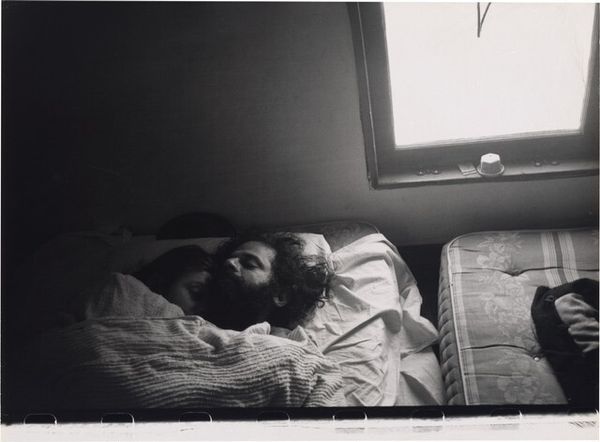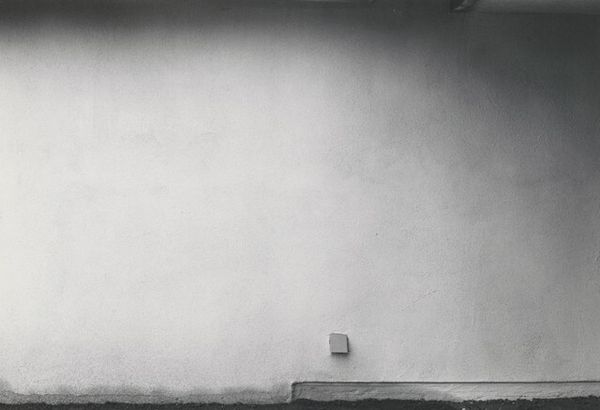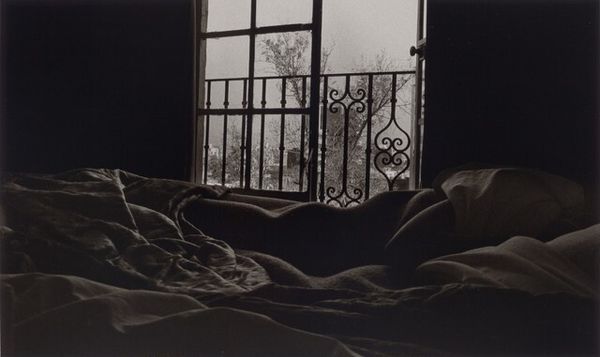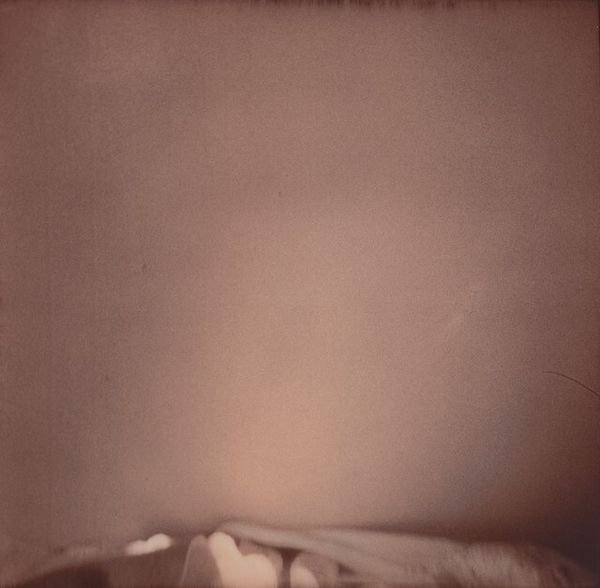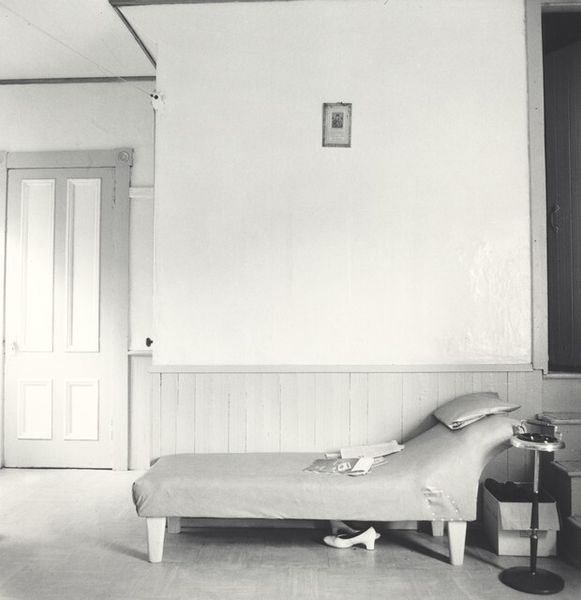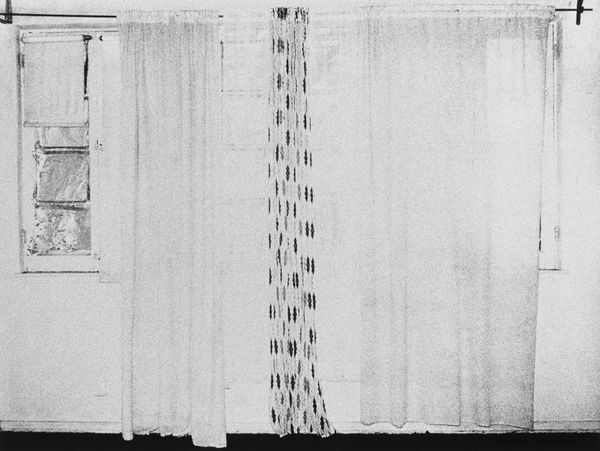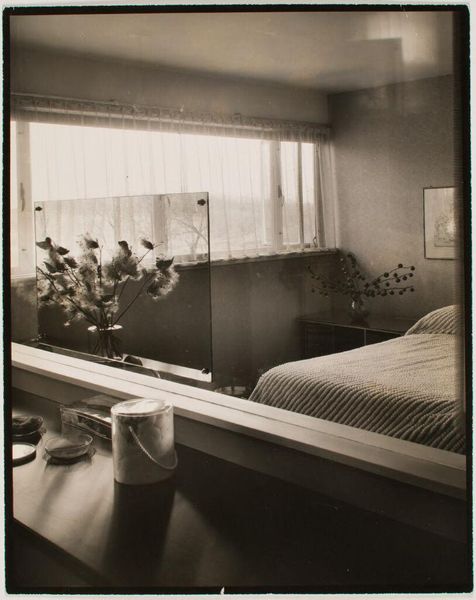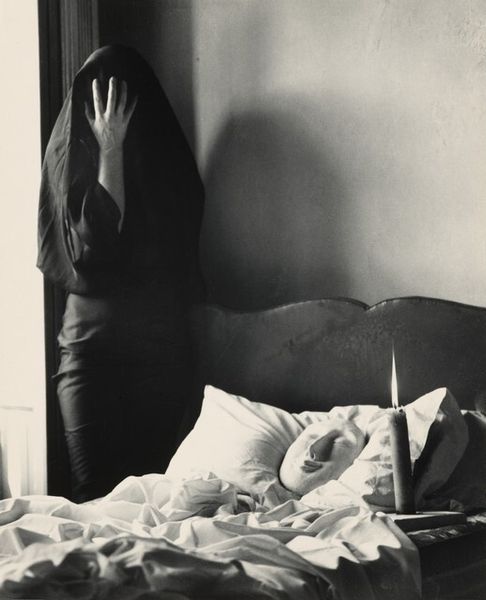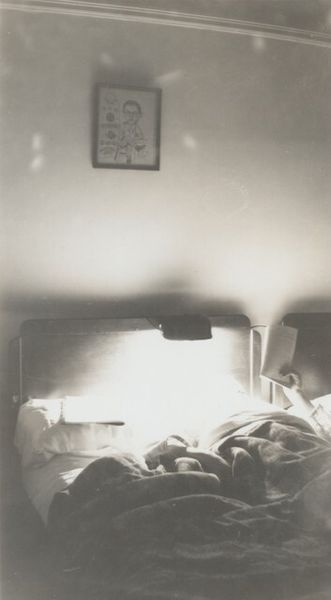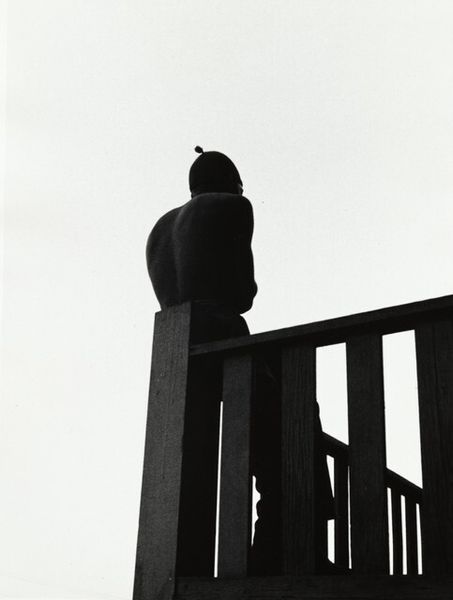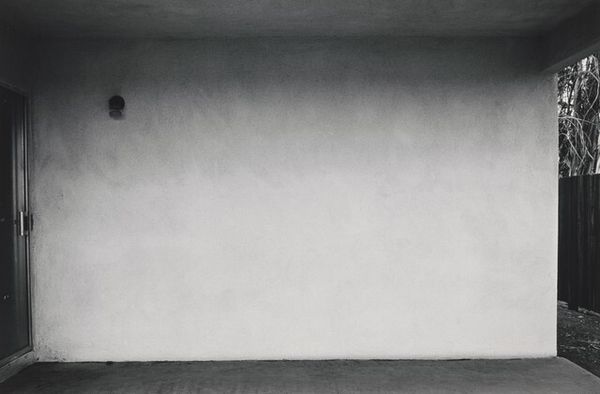
photography
#
black and white photography
#
landscape
#
street-photography
#
photography
#
black and white
#
monochrome
#
modernism
Dimensions: image: 33.4 x 22.5 cm (13 1/8 x 8 7/8 in.) sheet: 34 x 22.8 cm (13 3/8 x 9 in.)
Copyright: National Gallery of Art: CC0 1.0
Curator: Robert Frank's black and white photograph, "For Kazuko - Room 1050 Hotel Ibis, Tokyo, April 25, 1994," presents a hotel room window, veiled by a curtain printed with Mount Fuji. Editor: My immediate reaction is a sense of quiet unease. The stark monochrome emphasizes a division between the romanticized image of Fuji and the mundane reality of the anonymous hotel room. Curator: Precisely. Frank uses Mount Fuji as a loaded symbol. It’s an instantly recognizable emblem of Japan, representing both national identity and idealized natural beauty. Editor: But mediated, reproduced, made into a commodity. A screen, printed for tourist consumption. The labor to create the original textile, the photographic print itself—each has a material cost and specific social function. This challenges its pure, symbolic value. Curator: True, but even in reproduction, the mountain carries its cultural weight. The shadowy animal figures lined up on the windowsill read like household gods or children’s toys. The window frame contains them. Editor: Right, those small animal figures… made of what? Possibly cheap plastic. Consider the context: Post-war Japan wrestling with identity, material production, the influx of mass-produced goods versus traditional crafts. Curator: They contribute to a feeling of interiority— a personal, almost diaristic mood heightened by the title "For Kazuko." Kazuko is a specific person, possibly a traveling companion. What was the social and political situation? Was this meant for private consumption or for show? The photo reads like a shared intimate moment of reflection captured while traveling away from home. Editor: A souvenir, then. Mass produced memories alongside the handcrafted; the natural rendered artificial and framed through the artificial barrier of the hotel window. The print makes you think about Frank's darkroom practices. The high contrast and grain create texture, an object. It isn't merely representational, it's made. Curator: And within the constructed framing, the human desire for transcendence endures. It shows you just how resilient shared imagery and symbology really is. It feels especially important when confronting loss or alienation. Editor: Ultimately, it speaks to the tension between the manufactured and the authentic, challenging our easy assumptions about "high" art versus craft.
Comments
No comments
Be the first to comment and join the conversation on the ultimate creative platform.
